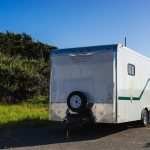How to Transition to RV Living Full-Time
How to Transition to RV Living Full-Time
Imagine waking up to a new horizon every morning, the freedom to travel wherever the road takes you, and the simplicity of living with only what you truly need. Welcome to the world of full-time RV living. While it can seem daunting to transition from a traditional home to a mobile lifestyle, with the right preparation and mindset, it can be a rewarding and liberating experience. In this guide, we’ll explore the essential steps to make your transition to full-time RV living smooth and successful.
Why Choose Full-Time RV Living?
The appeal of RV living lies in its flexibility, financial benefits, and the adventure it offers. According to the RV Industry Association, over 1 million Americans live in their RVs full-time. Here are some reasons why so many are making the switch:
- Freedom to travel: You can change your backyard whenever you want.
- Cost savings: Lower living expenses compared to maintaining a traditional home.
- Minimalist lifestyle: Embrace simplicity and reduce clutter.
- Community: Join a growing community of like-minded adventurers.
Step-by-Step Guide to Transitioning to Full-Time RV Living
1. Research and Plan
The first step in transitioning to RV living is thorough research and planning. Start by understanding the different types of RVs available: travel trailers, fifth wheels, motorhomes, and campervans. Consider factors such as size, layout, and amenities to determine what best suits your needs.
Once you’ve chosen an RV type, create a detailed plan that includes:
- Budget: Calculate the initial purchase cost and ongoing expenses.
- Travel Routes: Plan your initial travel routes and destinations.
- Legalities: Understand the legal requirements for RV ownership and travel, including vehicle registration, insurance, and driver’s licenses.
2. Downsizing Your Belongings
Transitioning to RV living requires a significant downsizing of your possessions. Start by decluttering your home and deciding what to keep, donate, sell, or store. Focus on keeping only the essentials and items that bring you joy.
Consider the limited storage space in an RV and prioritize multifunctional items. For example, choose collapsible kitchenware, compact furniture, and efficient storage solutions.
3. Purchasing the Right RV
Once you’ve decided on the type of RV that suits your needs, it’s time to make the purchase. Consider buying a new or used RV based on your budget. Attend RV shows, visit dealerships, and read reviews to make an informed decision.
Here are some tips for purchasing the right RV:
- Inspect Thoroughly: Check for any signs of wear, leaks, or damage.
- Test Drive: Ensure the RV is easy to drive and maneuver.
- Check Amenities: Verify that all appliances and systems are in working order.
4. Preparing for the Road
Before hitting the road, ensure your RV is well-equipped and ready for full-time living. This includes:
- Maintenance: Regularly service your RV to prevent breakdowns.
- Safety Equipment: Install smoke detectors, carbon monoxide detectors, and fire extinguishers.
- Connectivity: Invest in a reliable internet connection, such as a mobile hotspot or satellite internet.
Additionally, create a checklist for essential items, including kitchen supplies, bedding, toiletries, and outdoor gear.
5. Adjusting to RV Living
Transitioning to full-time RV living requires an adjustment period. Be prepared to adapt to a smaller living space and a more flexible lifestyle. Here are some tips to ease the transition:
- Stay Organized: Keep your RV tidy and organized to maximize space.
- Connect with the Community: Join RV clubs, online forums, and social media groups to connect with other full-timers.
- Embrace Flexibility: Be open to changes in your travel plans and embrace the spontaneity of RV living.
Common Challenges and How to Overcome Them
1. Limited Space
One of the biggest challenges of RV living is the limited space. To overcome this, adopt a minimalist mindset and focus on keeping only the essentials. Utilize creative storage solutions and regularly declutter your RV.
2. Maintenance and Repairs
RVs require regular maintenance and occasional repairs. Stay proactive by following a maintenance schedule and learning basic repair skills. Keep a toolkit and spare parts on hand for emergencies.
3. Connectivity Issues
Staying connected while on the road can be challenging. Invest in a reliable internet connection and have backup options, such as mobile hotspots or public Wi-Fi. Plan your travel routes with connectivity in mind and seek out RV parks with good internet access.
4. Finding Suitable Campsites
Finding suitable campsites can be a challenge, especially during peak seasons. Use apps and websites like Campendium, AllStays, and RV Parky to locate campsites and read reviews. Make reservations in advance whenever possible.
5. Balancing Work and Travel
If you work remotely, balancing work and travel can be challenging. Establish a routine that includes dedicated work hours and explore new destinations during your free time. Create a comfortable and ergonomic workspace within your RV.
Conclusion
Transitioning to full-time RV living is an exciting and rewarding adventure. By thoroughly researching, planning, and preparing, you can make the transition smooth and enjoyable. Embrace the freedom, flexibility, and simplicity of RV living, and join the growing community of full-time RV enthusiasts.
Remember, the key to a successful transition is adaptability and a positive mindset. Happy travels!

Leave a Reply